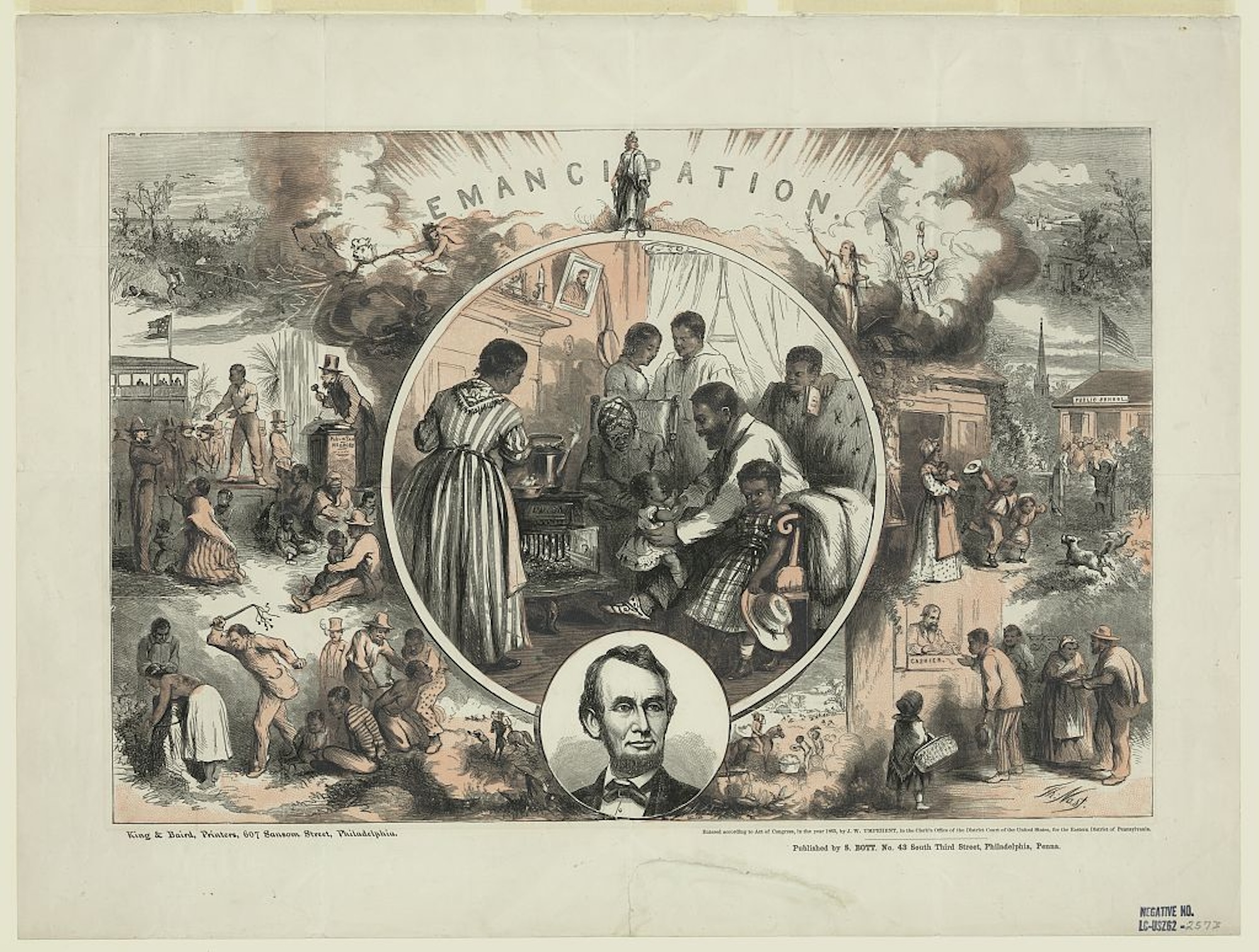Lessons on American authoritarianism: What the reconstruction and Jim Crow eras warn about America’s future
Master of Public Policy students Donovan Dixon and Madison Jennings explore how America’s Reconstruction and Jim Crow eras offer enduring lessons about the mechanisms of authoritarianism – arguing that institutional erosion, state-sanctioned fear and legal exclusion remain central tools in American governance today.

Authoritarianism is on the march in the United States. Within President Donald Trump’s first 100 days in office, his administration has invoked the 1798 Alien Enemies Act to deport undocumented immigrants and revoke foreign student visas, ignored court rulings to return wrongfully-deported individuals, and withheld federal funding for institutions like Harvard University, the U.S. Department of Education and the National Endowment for the Humanities. Names like Mahmoud Khalil, Rümeysa Öztürk, and Kilmar Abrego Garcia entered the American lexicon as a new class of ‘America’s Disappeared’: people taken off the streets in unmarked cars, served no warrants and shipped across the country or overseas.
As concerned viewers watch state-sanctioned attacks on the country’s institutions, comparisons to 1930s Nazi Germany abound. Perhaps the United States’ greatest success was getting the world to think these authoritarian tendencies were never part of its own history.
The Trump Administration’s fear-based and extrajudicial assaults are symptoms of an insidious pathology in which the governing structure becomes comfortable weaponising the rule of law, surveilling dissent, and abandoning constitutional norms. This is American authoritarianism: a regime type, popularized by the Reconstruction (1865-1876) and Jim Crow (1877-1950) eras, that weaponises domestic institutions, uses state-sanctioned terror campaigns and manipulates the national past to reject integration.
Reconstruction and the roots of domestic authoritarianism
American authoritarianism finds its genesis in 1865. Following the Civil War, legislators embarked on a political project, known as ‘Reconstruction’, to reintegrate the South while granting four million Black Americans political and social power. However, sporadic policies, including President Johnson’s blanket pardons of white confederates and congressional passage of the Reconstruction Acts (which established military rule over the South), created an environment where Black Americans assumed state and federal-level office while domestic terrorism erupted. Between 1865 and 1876, over 2,000 Black Americans were lynched by white mobs. Southern governments violated the Reconstruction Acts and the 13th-15th Amendments by arresting Black Americans on trumped-up charges, preventing them from testifying before courts, criminalising vagrancy and granting immunity to lynching participants.
When Reconstruction ended, Southern states centralised power. Their actions received validation from sympathetic Supreme Court Justices who ruled that the Federal Government could not dictate how states ‘enforce’ civil rights, refused Congress the power to ban private discrimination and legalised segregation. As the modern Supreme Court grants presidents ‘absolute immunity’ for ‘official actions’ and lifts a lower court order preventing the Trump Administration from removing noncitizens under the Alien Enemies Act, the judiciary is at the forefront once again.
Weaponisation of domestic institutions
American authoritarianism repurposes democratic institutions to entrench exclusion and suppress dissent. After Reconstruction, elected state legislatures crafted the architecture of racial exclusion. Policies like poll taxes and literacy tests, while framed as race-neutral, imposed voting barriers that disproportionately disenfranchised Black citizens. These laws functioned as tools of targeted suppression, enforced through bureaucratic discretion and judicial inaction.
Today, the machinery of government once again defines who participates – and who is silenced. Immigration law has become a domain where legal residents and students can be detained, deported or surveilled without criminal charges or public transparency. The detentions of Mahmoud Khalil and Rümeysa Öztürk – individuals engaged in nonviolent political expression – illustrate how administrative processes can be used to punish speech, constrain movement and erode trust in civic institutions.
Fear and manipulation
Authoritarianism thrives not only on coercion but by manipulating fear. The Trump-era deportation campaigns, warrantless arrests and political retaliation against student dissenters are rooted in a legacy of fear-based governance that stretches back to America’s most violent reckonings with race and power.
During Reconstruction, fear was institutionalized through terror. The Ku Klux Klan and other white supremacist mobs functioned as paramilitary enforcers of white rule. These acts were not the breakdown of law, but the assertion of a different kind of order: one built on fear, retribution, and enforced silence.
Today, while the instruments have changed, the message remains disturbingly familiar. Arrests of immigrants and students for their speech, the use of opaque legal categories like ‘alien enemies’, and the quiet deportation of dissenters to authoritarian prison systems like El Salvador’s CECOT facility, are part of a modern repertoire of political terror.
Fear is sustained by a manipulated past. The narrative of a 'Golden Age of America’ is a selective amnesia that erases the reconstruction massacres and the judicial betrayals that left entire Black communities without protection. “Redemption,” the Southern political movement that followed Reconstruction, promised to restore order, but that order was white supremacy wrapped in patriotic language. Today, when policy makers speak of restoring order or reviving national greatness, it is essential to ask: for whom, and at whose expense?
These historical frameworks are relevant not because they mirror the present, but because they illuminate how exclusion can be constructed through lawful means. They remind us that the erosion of democratic norms does not always require radical departure; it often advances through institutional adaptation, bureaucratic innovation and the gradual redefinition of state power.
Warnings to institutions of governance
For government officials and policy makers, the lesson is not to ignore historical parallels, but to understand their function. The past proves how laws and institutions can be manipulated to serve exclusionary aims and why vigilance is essential to ensure that state power remains a servant of liberty.
For those in public service, these echoes demand urgent reflection. The question is not whether the US is ‘becoming’ authoritarian, but whether it ever fully ceased to be. If the apparatus is moving toward repression, it is because it has been allowed – by courts, by Congress, and by a public narrative that confuses security with submission.
The lesson from Jim Crow is that power, when unchecked, always seeks permanence. If we allow the erosion of legal norms under the guise of national security or administrative necessity, we risk making authoritarianism not a moment, but a mechanism of governance.


